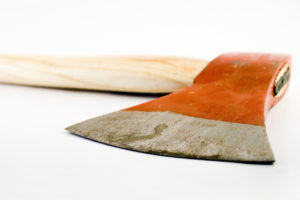What’s on the iPod: Hell and Back by The Airborne Toxic Event
Today is one busy day. I started the first two days of September on vacation, but that’s not where I’ve ended up. Since Tuesday, I’ve juggled three projects (now four) and have a full day of interviews and writing ahead of me.
one busy day. I started the first two days of September on vacation, but that’s not where I’ve ended up. Since Tuesday, I’ve juggled three projects (now four) and have a full day of interviews and writing ahead of me.
Time for some shortcuts.
In fact, a friend and I were talking yesterday about shortcuts. In particular, one of our writer friends, who is a sought-after writer, has squeaked by with a writing style I can only describe as lazy. My friend said the same thing — this guy, while good when he applies himself, just can’t help but cut corners. In more than a few cases, the product has suffered. He phones it in.
But when you’re busy, it’s so tempting, isn’t it? Well, no. It’s not. But you do wish you could find an extra hour or six sometimes. That kind of busy leads some writers (none I call friends) to do stupid shit like:
- Pulling old info from their work together and calling it a new article (and, as my friend pointed out yesterday, what if the data has changed?)
- Piecing together articles from various sources that aren’t their own and presenting it as new (it’s not, and now you’ve violated copyright laws and stolen from other writers — the “mashup” was never EVER anything but a horrible idea)
- Embellishing statistics or revising quotes (no, you can’t do this, and yet there are editors and writers out there who think you can)
There are other horrors, but those are, in my opinion, the worst.
So how do you write more efficiently so that you can get it all done?
Start with the simple. Easy stuff first, allowing for deadlines, of course. There’s something about finishing that easy article or project first that gives you momentum. Try it. Take the shorter project, bump it as far to the front of your queue as you can, and see what happens.
The quick-and-dirty outline. This method is something I’ve done with nearly every article in the past ten or more years — when you’re putting together your questions for your interview sources, write them with subheads in mind. It may take a minute more to think of how the article will ultimately read, but it’s a minute well spent, for you’ve just created the flow of your article, and your questions cut out the unnecessary.
Smart researching. Raise your hand if you’ve ever spent more than an hour digging for that one tiny statistic (my hand is up). Here’s a way to get it without spinning your wheels — send out two or three emails to your go-to sources. Ask them if they’ve come across it (if it exists, your experts stand a good chance of knowing). Ask them also if they don’t know, where should you look for it. Here’s another way to find that info — targeted keyword search. Example from my latest article: instead of using “gender wage gap” as my search, I used “wage discrimination” and “pay discrimination” searches. It netted tons of statistics, where the other keywords delivered too many opinion pieces.
Writers, how do you streamline your writing process?
What’s your go-to method for simplifying a heavy workload?